JSTOR provides robust, sustainable platform features designed to meet the evolving needs of scholars, educators, and students. Our tools integrate seamlessly with our vast digital library of journals, books, images, primary sources, and now, audio and video—ensuring that knowledge is both accessible and actionable.
New and enhanced features for teaching and research
We leverage community and institutional partnerships, generative AI, and other emerging technologies to continually improve and enhance user experiences and expand discovery and access to high-quality scholarly content.
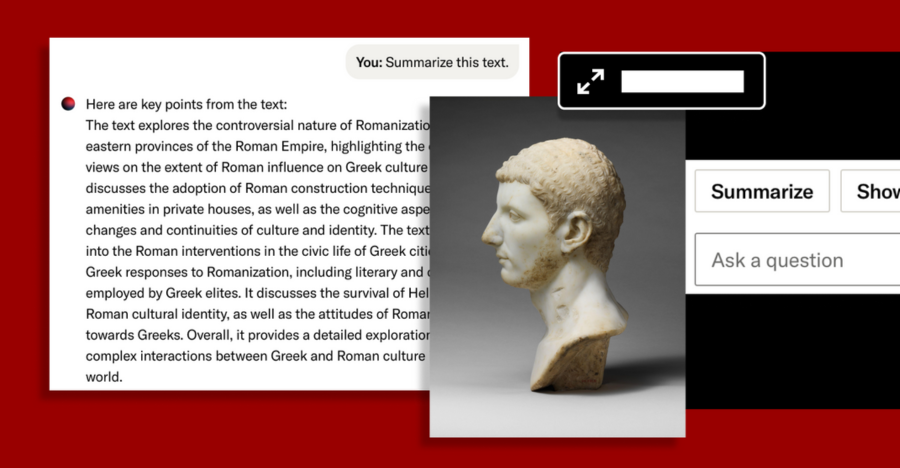
AI research tool
Research is about asking the right questions—and now, JSTOR’s AI-powered research tool makes it easier than ever to uncover insights, analyze texts, and expand your knowledge with greater efficiency. Built in partnership with the academic community, the research tool leverages JSTOR’s vast library of 2,800 journals, 100,000+ books, and 50,000+ research reports to help you:
- Quickly identify key points and arguments within scholarly texts, saving time on manual skimming.
- Seamlessly discover new topics and connections by surfacing related content and themes.
- Engage in conversational, natural-language search for more intuitive research.
Whether you’re tackling a dense theoretical text or exploring a new subject area, this tool streamlines discovery, deepens engagement, and enhances the research process.
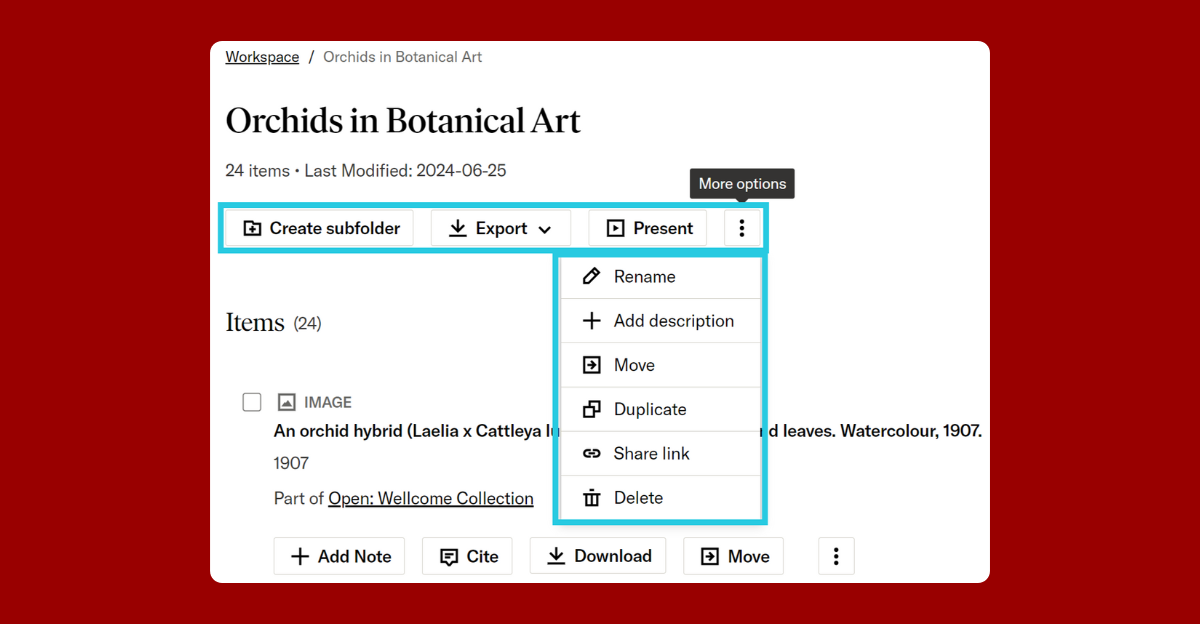
Workspace: Your personal research hub
With JSTOR Workspace, you can streamline your research process, organizing, analyzing, making connections, and forging new ideas all in one place.
- Save and annotate folders, sub-folders, and individual items.
- Organize and keep track of your research with ease when you leverage custom folders and personal notes to track your insights.
- Upload your own content and integrate it with JSTOR materials for a richer research experience.
- Present, export, and share your findings effortlessly—generate citations, create slides or PDFs, or share collections with peers and faculty within your institution.
Whether you’re preparing a paper, collaborating on a project, or building a long-term research archive, Workspace helps you stay focused, efficient, and inspired.
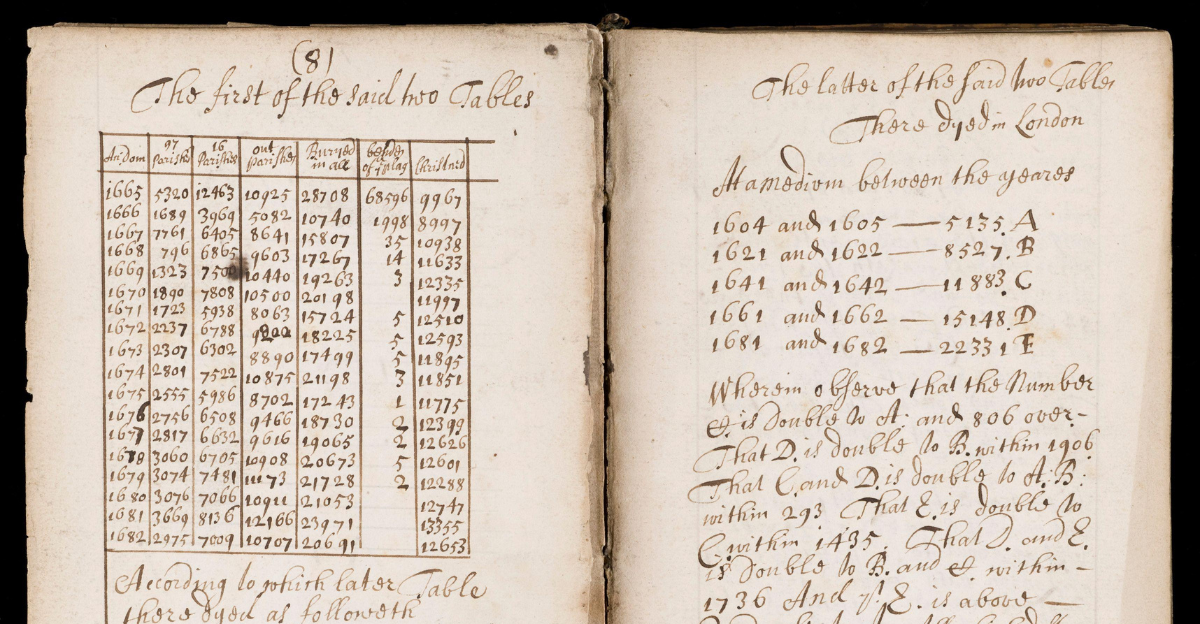
Text mining and Data for Research
Unlock new research possibilities with JSTOR’s Data for Research, a program designed to support text analysis, digital humanities, and computational scholarship. Researchers can access structured datasets to analyze trends, explore linguistic patterns, and conduct large-scale textual research.
- Request datasets from JSTOR’s vast collection of journals, books, research reports, and pamphlets.
- Download sample datasets to teach or learn text-mining techniques.
- Conduct large-scale analysis with custom datasets tailored for intensive research projects.
By providing machine-readable datasets, JSTOR empowers scholars to explore new methodologies, uncover hidden patterns, and push the boundaries of digital research.
Innovative tools for learning and engagement
JSTOR’s tools help students and educators engage deeply with scholarly content, collaborate in real time, and uncover new insights. From tracing the impact of foundational works to fostering interactive discussions, these features enhance comprehension, analysis, and scholarly engagement.
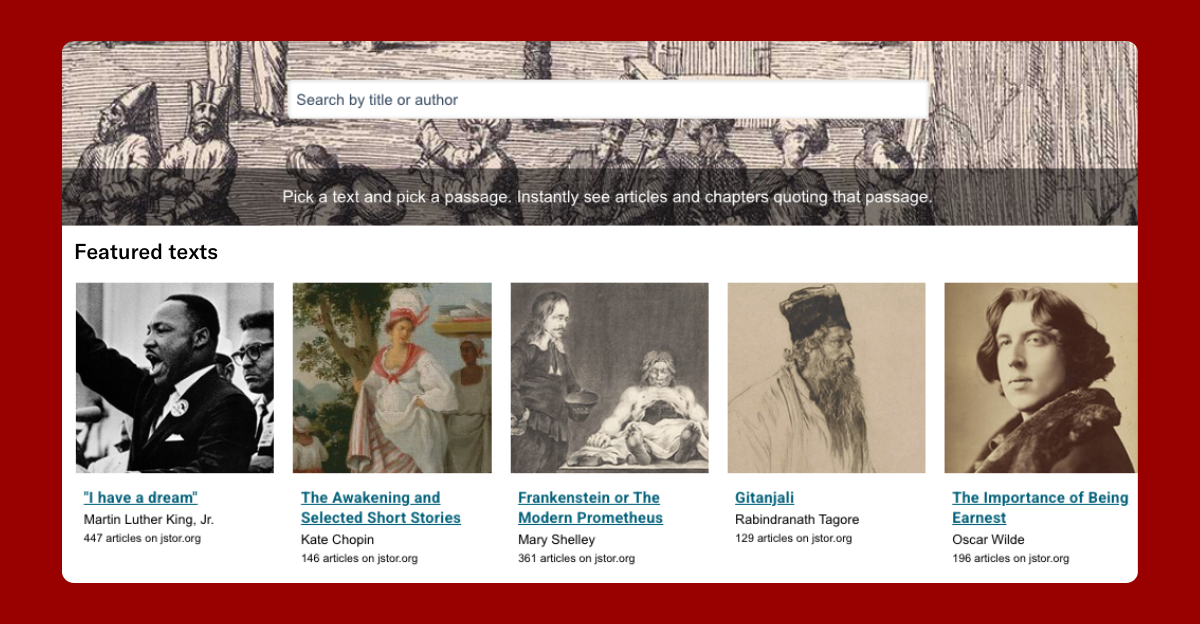
The Understanding Series
Deepen engagement with classic texts. The Understanding Series connects widely studied works with articles and book chapters that reference them, revealing deeper scholarly context and helping researchers trace influences, interpretations, and historical discussions across disciplines.
- Reveal deeper scholarly connections by linking primary texts to critical analyses.
- Explore citations in context, seeing exactly how key passages have been studied over time.
- Expand research possibilities by discovering related discussions and interpretations.
Simply pick a passage from a growing list of widely studied works—including the U.S. Constitution, Louisa May Alcott’s Little Women, and Martin Luther King, Jr.’s “I Have a Dream” speech—and see all the articles and chapters in JSTOR that quote it.
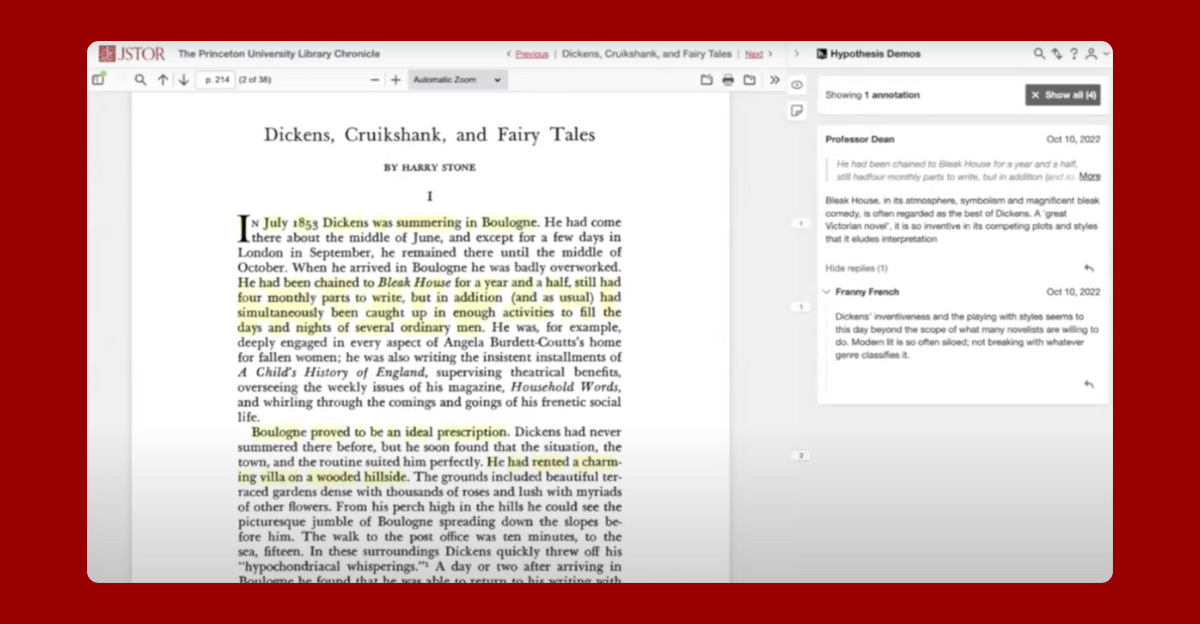
Hypothesis social annotation tool
Engage with texts collaboratively. Hypothesis brings social annotation to JSTOR, allowing students and educators to highlight, comment, and engage in discussions directly within JSTOR content in your LMS. Use social annotation to:
-
- Encourage peer-to-peer learning by fostering real-time discussions rooted in the scholarly content.
- Make complex texts more accessible through collaborative annotations and guided analysis.
- Provide educators with insight into students’ comprehension and thought processes.
By integrating Hypothesis with JSTOR, institutions can transform reading into an interactive, community-driven experience, supporting critical thinking, deeper comprehension, and more dynamic class discussions.
Integrated content for a comprehensive research experience
JSTOR brings together diverse content types—text, images, audio, and video—into a unified research experience, making it easier to explore primary and secondary sources side by side. By seamlessly integrating multimedia and archival materials with scholarly analysis, JSTOR helps researchers and educators uncover deeper insights, richer contexts, and new perspectives in a single workflow.
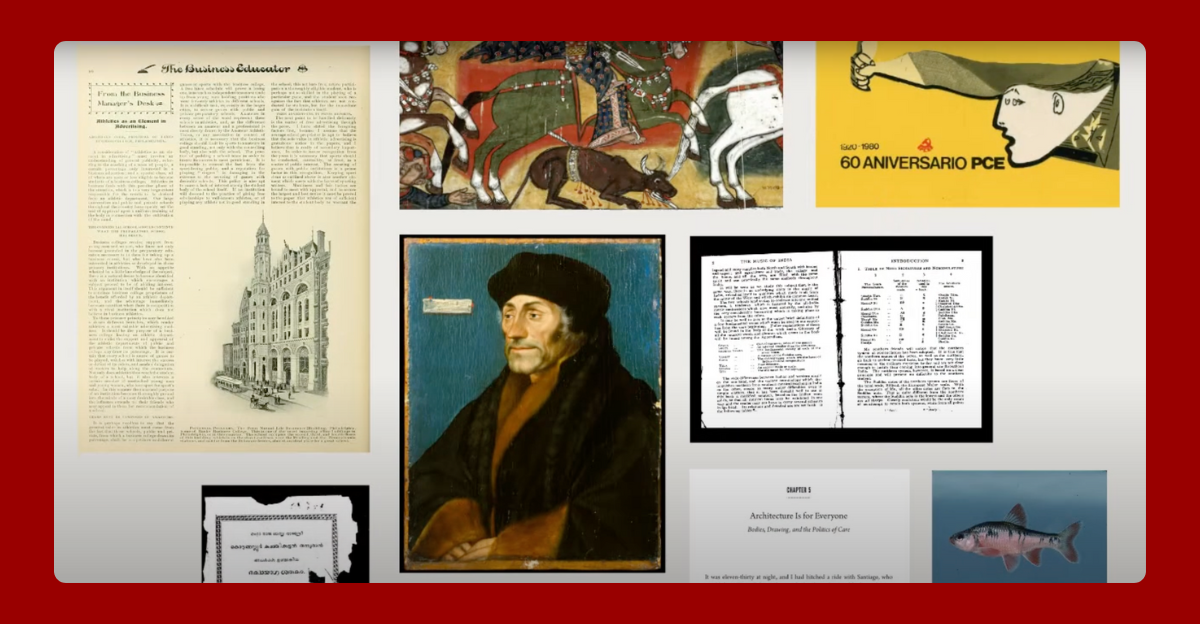
Primary and secondary source integration
JSTOR seamlessly combines primary sources—such as images, letters, and historical documents—with secondary literature like journal articles and books, creating a unified platform that enriches research and teaching.
- Enhance research depth by accessing firsthand materials alongside scholarly analysis.
- Inspire innovative connections by exploring a vast array of content types within a single, user-friendly environment.
- Streamline your workflow with integrated tools that allow for efficient organization and citation of diverse sources.
By merging essential scholarship with primary sources, JSTOR strengthens the quality of research, sparks innovative connections, and facilitates unexpected discoveries.

Audio and video multimedia content
JSTOR’s audio and video capabilities help you integrate dynamic, interactive audio and video content into your teaching and research.
- Expand research possibilities by incorporating diverse multimedia sources into scholarly exploration.
- Enhance accessibility with captions and transcripts that ensure all students can engage fully with and benefit from multimedia content.
- Engage learners with advanced playback tools that support engaged and interactive learning.
By leveraging multimedia in your teaching and research, you can make scholarly content more interactive, inclusive, and impactful.
The project, Addressing the Un-Addressed: Tuskegee University’s Hidden Audio Collections, 1957-1971, features speeches from key Civil Rights leaders and events, shedding light on influential figures and organizations, filling historical gaps, and offering insight into the relationships between leaders and their constituents.
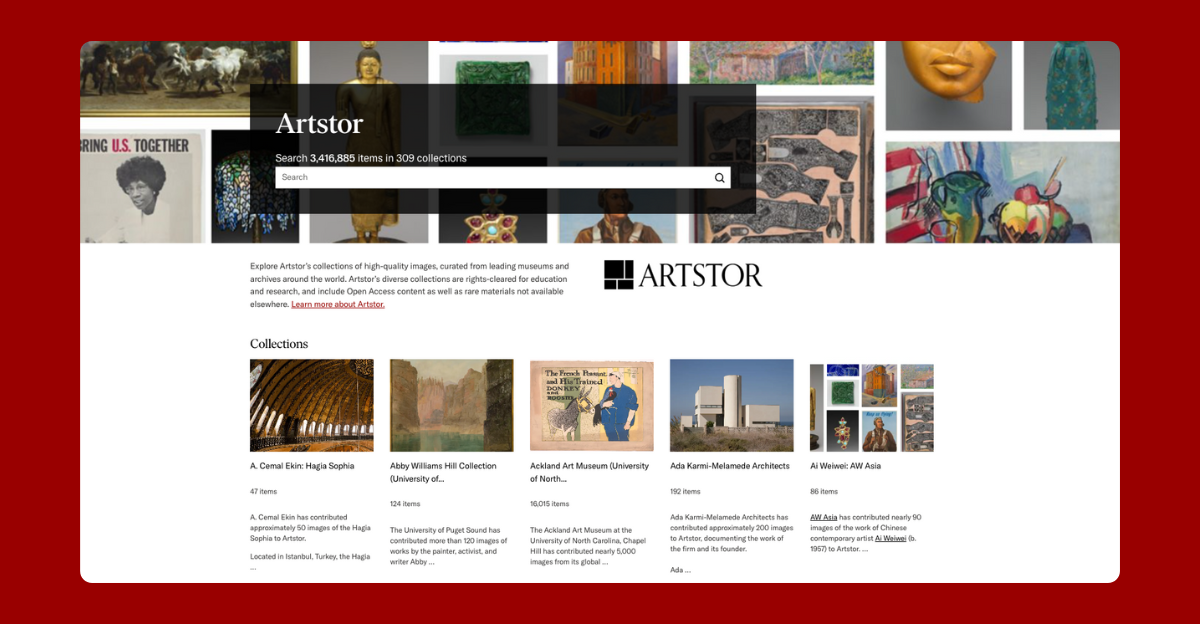
Images for visual discovery
Expand research and teaching with millions of high-quality images, now seamlessly integrated with JSTOR’s journals, books, and primary sources on one feature-rich platform.
- Enhance learning and research by combining visual materials with scholarly texts in a unified workflow.
- Support critical thinking and visual literacy with tools that allow zooming, side-by-side comparison, and annotation.
- Access rights-cleared, expertly curated images from trusted collections like the Smithsonian, the Louvre, and Harvard’s Peabody Museum.
By joining more than 2 million images with historical, cultural, and critical context, JSTOR empowers educators to engage students, enrich scholarship, and inspire new discoveries—all in one place.